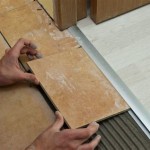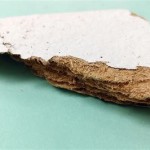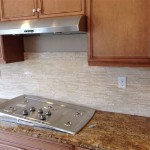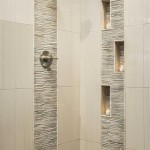Installing Ceiling Tiles for a Smoother Look: Walls and Ceilings
Ceiling tiles offer a versatile and cost-effective solution for enhancing the aesthetic appeal and functionality of interior spaces. Whether concealing damaged ceilings, improving acoustics, or simply updating a room's appearance, installing ceiling tiles is a project that can significantly impact the overall ambiance. This article provides a comprehensive guide to navigating the process of installing ceiling tiles, covering essential preparation, installation techniques, and considerations for achieving a professional and visually appealing result. The discussion involves both suspended and direct-mount ceiling tile installation methods, offering guidance dependent on specific project requirements.
Preparation is Paramount
Before commencing any ceiling tile installation, thorough preparation is critical. This preparatory phase encompasses several key steps, ensuring a smooth and efficient installation process. The initial step involves a comprehensive assessment of the existing ceiling. This assessment should identify potential issues such as water damage, structural weaknesses, or the presence of asbestos. Addressing these issues proactively is crucial to prevent complications during and after the installation. Water damage, if present, necessitates identifying and rectifying the source of the leak before proceeding. Structural weaknesses may require reinforcement or repair to provide a stable and secure foundation for the ceiling tiles. The presence of asbestos requires immediate professional attention, as disturbing asbestos-containing materials can pose serious health risks. If there is any suspicion of asbestos, testing by a certified professional is imperative.
Following the assessment, accurate measurements of the ceiling area are necessary. These measurements will determine the quantity of ceiling tiles required for the project. It is advisable to purchase slightly more tiles than calculated to account for cuts, waste, and potential damage during installation. The next step involves gathering the necessary tools and materials. The specific tools required will vary depending on the chosen installation method, but generally include a measuring tape, level, utility knife, safety glasses, dust mask, ladder or scaffolding, and appropriate adhesives or fasteners. For suspended ceilings, additional tools may include a chalk line, T-square, and wire cutters. Materials will include the selected ceiling tiles, adhesive (for direct-mount installations), suspension grid components (for suspended installations), and any necessary trim or edge moldings. Ensuring all tools and materials are readily available will streamline the installation process and minimize interruptions.
Finally, preparing the ceiling surface is essential for optimal adhesion and a professional finish. For direct-mount installations, the existing ceiling surface should be clean, dry, and free from loose paint, debris, or other contaminants. Depending on the surface condition, it may be necessary to scrape away loose paint, sand rough spots, or apply a primer to promote adhesion. For suspended ceilings, the existing ceiling should be cleared of any obstructions, such as light fixtures or ductwork, that may interfere with the grid installation. Proper planning and preparation are foundational to successful ceiling tile installation, minimizing potential challenges and maximizing the likelihood of a visually appealing and durable result.
Direct-Mount Ceiling Tile Installation
Direct-mount ceiling tile installation, also known as glue-up installation, involves adhering the ceiling tiles directly to the existing ceiling surface. This method is suitable for ceilings that are relatively smooth and level, and it is often a quicker and simpler option compared to suspended ceiling installations. However, it is essential to carefully prepare the ceiling surface to ensure proper adhesion and prevent tiles from detaching over time.
The first step in direct-mount installation is to establish a reference line. This line will serve as a guide for aligning the first row of tiles, ensuring that the entire installation is straight and even. Using a measuring tape and level, mark a line along the perimeter of the ceiling, typically a few inches away from the wall. This line should be parallel to the longest wall in the room. Apply construction adhesive to the back of the first tile, following the manufacturer's instructions. Position the tile carefully along the reference line, pressing it firmly against the ceiling surface. Use a damp sponge or cloth to wipe away any excess adhesive that may squeeze out from the edges of the tile.
Continue installing the remaining tiles in a similar manner, working outward from the first tile. Maintain consistent spacing between the tiles to ensure a uniform appearance. Use spacers or shims to achieve consistent gaps. For tiles that require cutting to fit around corners or obstacles, measure the required dimensions accurately and use a utility knife to score and snap the tile along the cutting line. Exercise caution when using a utility knife and wear safety glasses to protect your eyes. Apply adhesive to the cut tile and carefully position it in place. Once all the full tiles are installed, address the perimeter tiles, cutting them as necessary to fit snugly against the walls. Concealing the perimeter gap with crown molding is recommended for a seamless finish. Securely attach the crown molding to the walls using nails or screws, ensuring that it covers the edges of the ceiling tiles. Direct-mount ceiling tile installation offers a straightforward approach to enhancing ceiling appearance, when executed with meticulous preparation and attention to detail.
Suspended Ceiling Tile Installation
Suspended ceiling tile installation, also known as drop ceiling installation, involves creating a gridwork of metal channels suspended from the existing ceiling. The gridwork then supports the ceiling tiles, creating a level and visually appealing ceiling surface. Suspended ceilings are particularly advantageous for concealing pipes, ductwork, and wiring, as well as for improving acoustics and providing easy access for maintenance. This method allows for customization and flexibility in design, often providing the opportunity to incorporate lighting and ventilation elements into the suspended ceiling system.
The initial step in suspended ceiling tile installation is to determine the desired ceiling height and mark the perimeter of the room. Use a laser level or a measuring tape and level to establish a consistent height around the room. Install the wall angles, also known as L-brackets, along the marked perimeter. These angles will provide support for the main runners and cross tees that comprise the gridwork. Secure the wall angles to the walls using screws or nails, ensuring that they are level and properly aligned. The next step is to install the main runners, which are the primary support beams for the grid. Suspend the main runners from the existing ceiling using hanger wires, spaced according to the manufacturer's recommendations. The hanger wires should be securely attached to the ceiling joists or other structural members. Ensure that the main runners are level and aligned with each other.
Once the main runners are in place, install the cross tees, which connect the main runners and form the gridwork framework. The cross tees are typically spaced at 2-foot intervals, creating a grid pattern that matches the dimensions of the ceiling tiles. Attach the cross tees to the main runners using connectors or clips provided by the manufacturer. Ensure that the cross tees are level and perpendicular to the main runners. With the gridwork complete, carefully install the ceiling tiles into the grid openings. Lift each tile into place and gently lower it onto the grid, ensuring that it sits securely and evenly. Cut the border tiles as necessary to fit the perimeter of the room. Use a utility knife or a specialized tile cutter to achieve clean and accurate cuts. Concealing the perimeter gap with edge trim is recommended for a refined finish. Integrating light fixtures and ventilation elements into the suspended ceiling requires careful planning and execution. Ensure that the selected fixtures are compatible with the grid system and that they are properly wired and connected. Suspended ceiling tile installation offers a versatile and customizable solution for creating functional and aesthetically pleasing ceilings, enhancing both the appearance and performance of interior spaces.

Ceilings Armstrong Residential

How To Tile A Ceiling Tips And Guidelines Howstuffworks

Say Goodbye To Messy Popcorn Ceilings Diy Guide Covering With Glue Up Ceiling Tiles

Smooth Look Ceilings 280 Armstrong Residential

How To Install Drop Ceiling Tiles Ceilume

12 Drop Ceiling Installation Tips From A Pro Family Handyman
How To Install Surface Mount Ceiling Tiles Easy Up Kanopi By Armstrong

Smooth Look Ceilings 493 Armstrong Residential

A Drop Ceiling That Looks Better Than Drywall How To Install In Basement Diy

Why You Consider Installing Pvc Ceiling Tiles Decorative Inc
Related Posts








